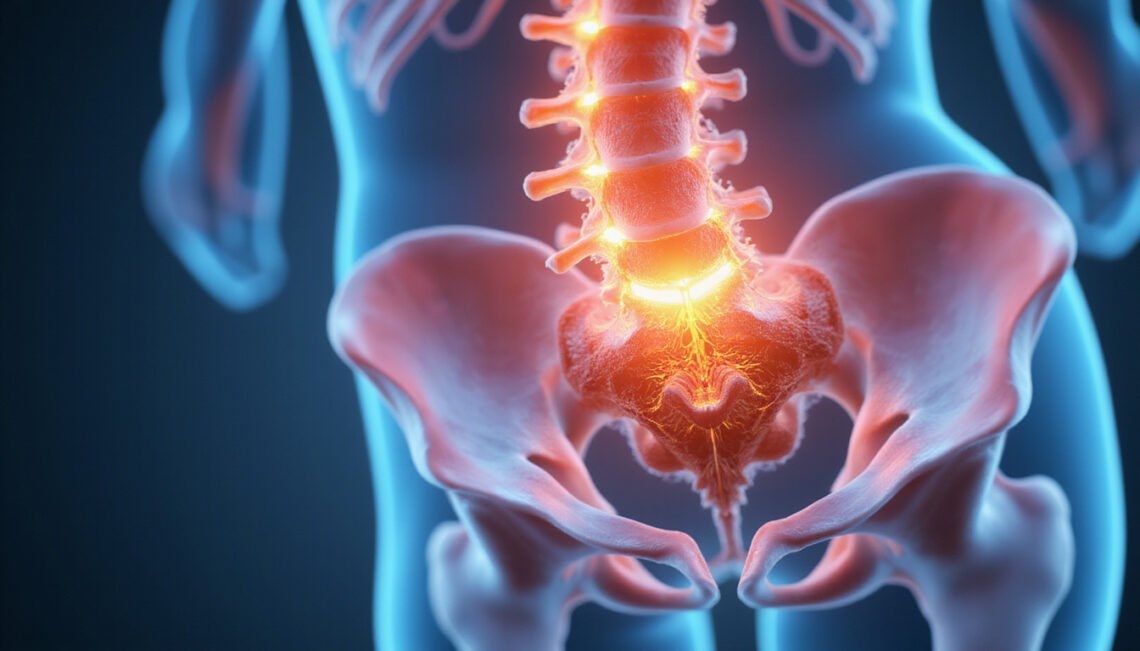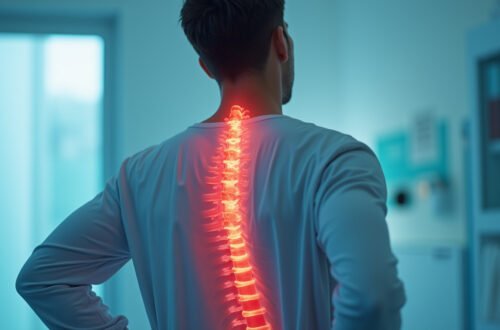A lumbar disc tear is a common spinal condition that can cause significant discomfort and impact daily activities. This injury affects the discs in the lower back, which serve as cushions between the vertebrae. Recognizing the symptoms early and understanding the causes and treatment options are essential for managing pain and preventing further complications. In this article, we will explore everything you need to know about a lumbar disc tear, from its symptoms and root causes to the most effective treatments available today.
What Is a Lumbar Disc Tear?
The lumbar spine consists of five vertebrae in the lower back, separated by soft, gel-filled discs. These intervertebral discs act as shock absorbers, allowing flexibility and movement in the spine. A lumbar disc tear occurs when the outer layer of the disc, called the annulus fibrosus, develops a tear or crack. This damage can cause the inner gel-like material (nucleus pulposus) to bulge or leak, irritating nearby nerves and leading to pain.
Common Symptoms of a Lumbar Disc Tear
Identifying a lumbar disc tear can sometimes be challenging because symptoms may overlap with other spinal conditions. However, some hallmark symptoms can guide diagnosis:
- Lower back pain: Often localized and persistent, worsening with movement or prolonged sitting.
- Radiating leg pain (sciatica): Sharp or burning pain that travels down the buttocks and legs due to nerve irritation.
- Numbness or tingling: Affected nerves may cause sensations of pins and needles in the legs or feet.
- Weakness: Muscle weakness in the legs or feet may indicate nerve compression.
- Limited mobility: Difficulty standing, walking, or bending due to pain or stiffness.
If you notice these symptoms, especially if they worsen over time, it is advisable to seek medical evaluation promptly.
Causes and Risk Factors of Lumbar Disc Tear
Understanding what leads to a lumbar disc tear helps in prevention and informed treatment choices. Several factors contribute to the development of these tears:
- Age-related degeneration: The discs naturally lose water content and flexibility with age, making them more susceptible to tears.
- Trauma or injury: Sudden impacts, falls, or accidents can cause tears, especially if the spine is twisted or compressed.
- Repetitive strain: Jobs or activities requiring heavy lifting, bending, or twisting can gradually damage discs.
- Poor posture: Slouching or improper ergonomic positions increase pressure on the lumbar discs.
- Obesity: Excess body weight adds stress to the spine, accelerating wear and tear.
- Genetics: A family history of disc problems can elevate the risk of tears.
Diagnosing a Lumbar Disc Tear
To confirm a lumbar disc tear diagnosis, healthcare professionals typically use the following approaches:
- Physical examination: To evaluate pain levels, reflexes, range of motion, and neurological function.
- Imaging studies: MRI scans are the gold standard for visualizing disc integrity and nerve involvement. CT scans or X-rays may also be used but provide less detailed soft tissue images.
- Nerve conduction tests: These assess nerve function if symptoms of nerve damage are present.
Accurate diagnosis is vital to guide treatment decisions and improve outcomes.
Effective Treatment Options for Lumbar Disc Tear
Treatment for a lumbar disc tear depends on the severity of symptoms and the extent of the injury. Most cases respond well to conservative (non-surgical) methods, but surgical intervention may be needed in more severe or persistent cases.
Conservative Treatments
- Rest and activity modification: Avoid activities that exacerbate pain while maintaining gentle movement to prevent stiffness.
- Physical therapy: Tailored exercises help strengthen the core and back muscles, improve flexibility, and relieve nerve pressure.
- Medications: Over-the-counter pain relievers such as NSAIDs (e.g., ibuprofen) reduce inflammation and discomfort. Muscle relaxants or prescription pain medications may be recommended for severe pain.
- Epidural steroid injections: Corticosteroids injected near the affected nerve can rapidly decrease inflammation and pain.
- Heat and cold therapy: Applying heat relaxes muscles, while cold packs reduce swelling.
- Lifestyle changes: Weight loss, ergonomic adjustments, and smoking cessation can support spine health.
Surgical Treatments
When conservative treatments fail or neurological symptoms worsen, surgery might be necessary. Common surgical options include:
- Microdiscectomy: Minimally invasive removal of the torn portion of the disc that is compressing nerves.
- Lumbar fusion: Joining two or more vertebrae to stabilize the spine.
- Artificial disc replacement: Replacing the damaged disc with an artificial one to preserve mobility.
Your spine specialist will help determine the best surgical approach based on your specific case.
Preventing Lumbar Disc Tear: Tips for Spinal Health
While some risk factors like age or genetics cannot be changed, many lifestyle habits can minimize the risk of developing a lumbar disc tear:
- Maintain proper posture when sitting, standing, and lifting.
- Engage in regular low-impact exercises, such as swimming or walking.
- Use ergonomic furniture and supportive mattresses.
- Practice safe lifting techniques — bend your knees, not your back.
- Keep a healthy weight to reduce spinal load.
- Avoid smoking, which impairs disc nutrition and healing.
FAQ Section
Q1: What does a lumbar disc tear feel like?
A lumbar disc tear typically causes localized lower back pain that may radiate down the legs. The pain can be sharp, burning, or accompanied by numbness and tingling.
Q2: Can a lumbar disc tear heal on its own?
Mild lumbar disc tears often heal with conservative treatments like physical therapy and pain management. However, severe tears may require surgical intervention.
Q3: How long does it take to recover from a lumbar disc tear?
Recovery time varies, generally ranging from a few weeks with conservative care to several months after surgery. Following your doctor’s treatment plan is essential for optimal recovery.
Expert Insights and Authoritative Source
The Cleveland Clinic highlights that lumbar disc tears are a frequent cause of lower back pain and emphasize the importance of early intervention to improve prognosis and reduce chronic pain risk (source).
Conclusion: Take Control of Your Lumbar Spine Health Today
A lumbar disc tear does not have to dictate your quality of life. Understanding the symptoms, causes, and available treatments empowers you to take proactive steps toward healing. If you experience persistent lower back pain or neurological symptoms, seek professional medical advice promptly. Whether through conservative care or surgical options, effective solutions are available to restore your comfort and mobility.
Don’t wait for your symptoms to worsen—partner with a spine specialist to develop a personalized treatment plan today. Prioritize your spinal health and regain the freedom to move pain-free!






